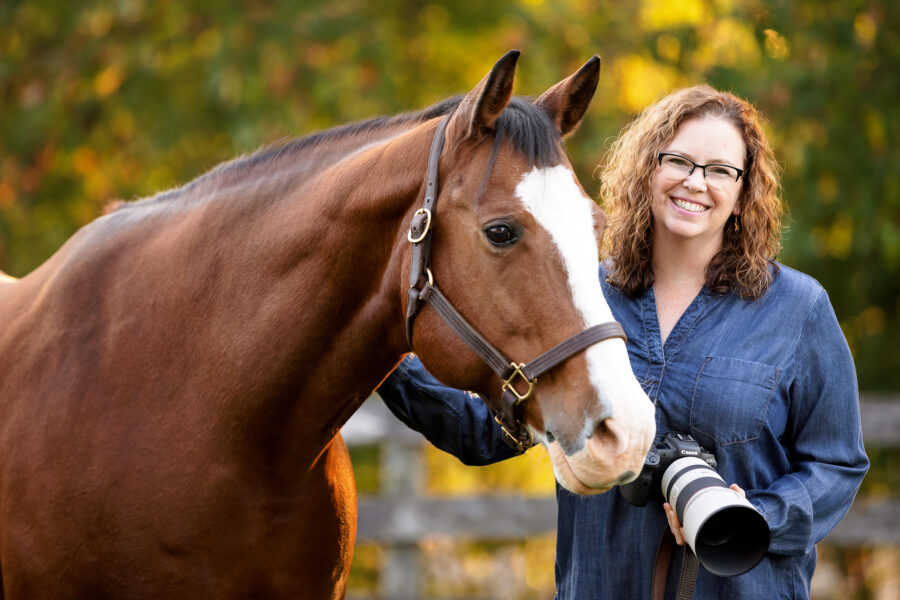We recently caught up with Luis Pelayo, Thinkific user and co-founder of Spanish To Move. Luis and his team teach online the Spanish language in comprehensive, fun, and easy-to-use online courses.
Luis is also the winner of the 30 in 30 Challenge we hosted last summer, where we provided a series of live training webinars to help Thinkific users. The goal of the challenge was to help online course creatorsget 30 new students for their courses in a 30 day period.
Luis and his team accomplished more than double the goal of the challenge, enrolling 70 new students into their course in the first month. Impressed with his results, we decided to reach out to him and learn more about his experience as an online course creator.
Read the full case study below or watch our video interview with Luis here
Matching expertise with a strong market demand
Luis holds a Ph.D. in Philosophy and had spent 12 years in the magazine and publishing industry before he began creating online courses. As a Mexican and native Mexican Spanish speaker, he saw a way he could help others by sharing his knowledge. This realization was fuelled when Luis and his sister detected a need in the market for Spanish language courses.
“We started to study the market and we detected a need”, Luis told us. “There are 21 million students in the world studying Spanish right now, and Spanish is becoming more and more important every day in international communication.” Luis and his sister knew it was possible for them to create a product or service to meet the rising need for easy to follow Spanish language learning courses.
It was by no means smooth sailing at the beginning, especially since Luis was working a separate job. “You have got to be very patient”, Luis explains, “because we are doing this business in parallel with some other activities. You cannot dedicate 100% to the online course business and expect immediate results”. He tells us that, although he only arrived at Thinkific just over 6 months ago, it has been three years since Spanish To Move initially produced a trademark, created course material, selected a domain name and started building out a webpage.
Creating a language course with a unique offering
Luis knew that language courses were a very, very competitive product to offer. We at Thinkific often see hesitation with our customers who don’t want to publish an online course on a topic that they think too many other people are already teaching. But it’s important to not let that deter you from creating your course. You just need to understand your unique value proposition (or UVP) that sets you apart from your competition. What can you offer that’s different and special, and that people will gravitate towards?
Luis decided that he wanted to take a new approach to language teaching by making the Spanish learning process easier, fun, and intuitive. “Many examples of programs focus on teaching grammar structures or learning long lists of words, prepositions, grammar, and conjugations”, he said. “Then the students end by saying, ‘Spanish is very difficult’”. With Spanish To Move, Luis says their unique value proposition became “making the Spanish language an easy and intuitive and subconscious process”.
Luis also focused on creating interesting content as another part of Spanish To Move’s unique offering. He wanted to teach Spanish by infusing Mexican and Hispanic culture into the lessons. Luis tells us, “We are trying to offer interesting content on philosophy, psychology, history, and it’s not the typical lesson you will learn at school.” Spanish To Move also has lessons solely focused on travel if students are booking a trip to a Spanish speaking country. With this unique, two-fold value proposition: 1) to make Spanish an easy and intuitive process, and 2) to create interesting content focusing on Mexican and Hispanic culture, travel, and more, Luis Pelayo and Spanish To Move distinguished themselves and their language courses in a crowded industry.
The format of his online course business
The great thing about the setup of Luis’s courses is the flexibility that his students get when choosing a course format that works best for them. “We have self-teaching courses, which include 45 lessons. [But you can also] book live classes with your teacher – for example, if you don’t want the online course, you can just book 10, 5, 20 sessions with your instructor to discuss the things you want to discuss…or you can buy an online course, plus live lessons. You can mix them with whatever you need.” For live classes, Luis says that Spanish To Move sets up interactive live lessons with different Spanish instructors from different regions, “if students want to learn a certain accent such as the Mexican Spanish, Colombian, or Spanish accent”. What a great idea!

In terms of types of content, Luis tells us each of his Spanish lessons include a text, audio, and a video portion. “First, you have to read the text to have an idea of what is being said in Spanish, then you have the audio to get used to Spanish pronunciation sounds, and you have a video with simultaneous translation into English, like the subtitles of a movie…it’s a new approach to learning a language.”

Choosing Thinkific to run his online courses
A problem Luis and his sister were finding as they started growing their online course business was keeping track of all different elements, while also paying professionals for help in different areas. Luis said, “We developed our own webpage with a web designer, and we [had to] try to figure out what it should have”. Luis also spoke to us about having to learn marketing strategies for his courses, such as using a separate MailChimp account to build his newsletter.
It wasn’t until mid-2016 that Luis discovered Thinkific and decided to use it to host his online courses. “Six months ago, we came to Thinkific and discovered that there were experts that were doing what we needed,” Luis told us, “and it was very easy for me, for example, to add, to take off, and include new things without having a web designer – and without previous knowledge of web design or programming.”
With Thinkific, Luis also found he could easily integrate his MailChimp email list, as well as integrate marketing tools like SumoMe (now called Sumo). Now, Luis tells us that everything in Spanish To Move has been moved to Thinkific. “We have everything under the Thinkific platform,” he said. “We have [our] pages – we offer different custom links on our Thinkific page, and we have [our] different products – everything on Thinkific. We have [also] used integrations…we use MailChimp for the automatic workflow, we use PayPal to charge…we are taking advantage of all these integrations that Thinkific offers”.
Marketing strategies for promoting his courses
On the topic of marketing strategies, we also asked Luis about some ways he gets his Spanish courses out there to attract new students. Luis admitted that when they first started creating their courses, they didn’t have any marketing strategies in place. “With our old webpage, we didn’t have lead magnets, we didn’t have form registrations, we didn’t have any of the [marketing] suggestions that I later received in the 30 in 30 course”, said Luis. One of his biggest takeaways from the Thinkific 30 in 30 Challenge was creating a Unique Value Proposition (UVP), as well as a more compelling sales page. He started to add specific language and questions to his sales page that would grab the attention of his target audience, such as ‘Have you ever tried to learn a language? Do you already speak Spanish? You don’t? Well, we can offer you a solution’.
Related: What to Include on the Sales Page for your Online Course
The next thing Luis and his team experimented with was creating a ‘lead magnet’ or a free downloadable piece of content given out in exchange for an email or other contact information. Luis created a free eBook called ‘15 Essential Tips When Learning Spanish’ that he promoted in order to get new emails to his list. From there, he built out a workflow that sent free articles, as well as free trial lessons from his full courses, to people on his email list. “We offer free lessons to try our courses – you can, for example, enroll in a course and try four, five, or six lessons for free and decide if you want to buy the full course”.

In terms of promotion, Luis says that Spanish To Move has an active blog from which they promote their courses, as well as pushing content out from their five social networks: Twitter, Facebook, YouTube, LinkedIn, and Pinterest. He’s also started making an investment in Google Ads now that he’s built up his content and gotten some attention on his webpage. He’s also found Thinkific’s integration with Sumo to be super helpful in terms of marketing his courses.
“The most powerful [integration] I found was with SumoMe – this pop-up that appears on your webpage. At the beginning, I had this list builder that came out from the bottom of the page in a very polite manner, and we have had good results, but I discovered that conversions doubled when we implemented the pop-up”. Now that Luis is integrating some great marketing strategies with lead magnets, pop-ups on his webpage, as well as building out a free content workflow and free trial courses for his email list, his next challenge is scaling his business for the long term.
Related: How to Build an Email List (Complete Guide)
Biggest challenges in creating an online course
We turned next to challenges and asked Luis about the biggest obstacles he saw when creating his online courses and online business. Luis told us that one of his biggest challenges was proper time management. “The first challenge I have to face is how to maximize the use of my time. I am busy, I have my work which takes me most of the day. [I have to] try to separate time to work on [my] project”.
His advice to turn this around? “Be consistent every day – try to turn off all distractors and concentrate on your course, because you need to be very, very consistent, very disciplined, and very persistent to launch a course, and most online course creators know this”.
Another challenge Luis found, which is very common with many first time online course creators, was figuring out the right pricing model for his courses. He said, “I have been watching the videos from Greg,” (Thinkific’s CEO & Co-Founder) “And he has an online course on how to price your course – and he was talking about the advantages of valuing your work and your product to consider a fair price…At the beginning we offered our courses as the best option in the market in terms of price, but then we discovered that was not our most important value. Our most important value was the method, was the course, was the content, was the love we put in our course -the personal attention-and we are actually increasing our prices for next year and we are having sales.”
Advice for first time course creators
1. You have to be willing to learn
Luis says that when he was first starting his online course business, he had to do lots of research and educate himself, and notes that he’s still learning every day. “I didn’t know anything about marketing. I didn’t know about sales funnels…I didn’t know many things, and I had to learn, and I had to read, and I had to study, and I had to watch videos, and I had to reblog articles and many, many, many other things…you have to be willing to learn, you have to be open – to listen to some people who criticize your work, and who make suggestions”.
2. Be open to feedback and criticism
Luis told us that when he was beginning his online course journey, he won a contest for 30 minutes of feedback with renowned personal and business success speaker Brian Tracy. He says, “[Brian] practically – in a very polite manner – but practically destroyed our product. [He told us] ‘It sounds difficult,’ ‘the web page is not responsive,’ ‘it’s not working,’ ‘it makes it difficult – the process of learning,’ and it’s hard to start all over again…but you have to be open as a course creator to critics, to suggestions, and to learn and implement new things.” Luis was grateful for Brian’s feedback and immediately started to make improvements to his business based on that feedback.
3. Have patience – this is an entrepreneurial endeavor
Something that not many course creators realize is that they’re creating a business when they set up online courses. They are becoming entrepreneurs, and a business has a lot of steps, so it’s important to be patient with yourself. Luis says, “It’s a live business…this is the first project we are going to have for the rest of our lives”. Give yourself time to learn all of the different things you need to learn because, at the end of the day, if you create an online course, and you’re trying to promote yourself and get customers, you’re being an entrepreneur – that’s an entrepreneurial venture.
If you're trying to promote yourself & get customers, you’re an entrepreneur. - Luis Pelayo @SpanishToMove Click To Tweet4. We all have things to share
Luis’s lesson for other online course creators is to know that “we all have things to share…you would be surprised at how much knowledge people have…you have to share with people what you know if you’re an expert in a certain field. The first satisfaction of being online course creator is the satisfaction of sharing – giving someone something that you have received, and that you have learned during your life, and some people will learn and will use this knowledge”.
Thanks so much for sharing your insight Luis!
To learn more about Luis’s online courses at Spanish To Move, visit www.spanishtomove.com.
Inspiring story of how Luis Pelayo built an online course business teaching Spanish @SpanishToMove Click To Tweet





